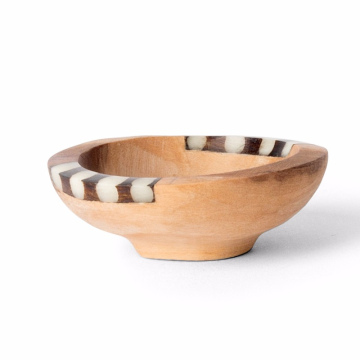A Brief History of Takoyaki
Takoyaki, the delightful octopus-filled snack, traces its origins back to the bustling streets of Osaka in the 1930s. Created by a street vendor named Ikeda Yasuhiro, this dish emerged during a time when the city was a hub of culinary innovation. Initially, it was inspired by a dish called ‘akashiyaki,’ which shares similarities but is typically made with a lighter batter and served with a dipping sauce. Over time, the recipe evolved, gradually introducing various ingredients and embellishments that catered to the local palate.
The popularity of takoyaki soared during the 1950s, largely attributed to the emergence of street food culture in Japan after World War II. The restoration of the economy and the subsequent increase in disposable income allowed more street vendors to sell their creations. Takoyaki quickly gained traction as a beloved snack among locals, thanks to its savory flavor and convenient bite-sized format. Vendors began utilizing specialized grills that featured spherical molds, allowing for the signature round shape that we recognize today.
Throughout the decades, takoyaki has undergone numerous adaptations, with variations emerging across different regions of Japan. While the traditional recipe consists of diced octopus, tempura scraps, pickled ginger, and green onions, modern takes often explore creative fillings, ranging from cheese to even unconventional ingredients. This adaptability has enabled takoyaki to maintain its status as a staple of Japanese cuisine.
With the advent of globalization and the rise of Japanese cuisine worldwide, takoyaki has garnered international acclaim. It is now commonly featured in Japanese restaurants across the globe, celebrated not only for its taste but also for its cultural significance as an emblem of Japan's vibrant street food tradition. The journey of takoyaki is a testament to how local flavors can transcend borders, captivating taste buds far beyond their place of origin.
The Art of Making Perfect Takoyaki
To create authentic takoyaki, a variety of ingredients and tools are essential. The primary component is the batter, which is typically made from a blend of all-purpose flour, dashi (a Japanese soup stock), and eggs. The blend may also include other ingredients such as soy sauce and mirin to enhance flavor. Additionally, the filling, which is crucial to the takoyaki's essence, predominately consists of diced octopus, along with optional ingredients like green onions, pickled ginger, and batter-fried tempura scraps, known as tenkasu.
Central to the takoyaki preparation is the specialized takoyaki grill, a cast-iron or aluminum plate featuring multiple spherical molds. This tool is paramount for achieving the perfect takoyaki shape. When using the grill, it is important to preheat the molds and lightly coat them with oil to prevent sticking. Once the molds are ready, pour the batter evenly into them, filling just above the rim. The key to the round shape lies in the technique; after allowing the batter to cook for a few moments, use a skewer or chopstick to flip each ball. This process can be repeated until the takoyaki are golden brown and firm, ensuring that each surface is evenly cooked.
To achieve that desirable contrast of textures, it is vital to perfect the balance between a crispy exterior and a soft, gooey interior. Several factors contribute to this outcome, including the oil used for cooking and the timing of the turning process. A generous amount of oil will help cultivate a crisp outer layer, while steaming the inside ensures the octopus remains tender. Some chefs recommend cooking the takoyaki on higher heat initially and then reducing it for the final stages to achieve this effect. Mastering the art of takoyaki can take practice, but following these guidelines brings you closer to the perfect batch of this beloved Japanese street food.
Popular Variations and Toppings
While traditional takoyaki is predominantly filled with diced octopus, a vast array of variations exist, catering to diverse palates and preferences. In different regions of Japan, local specialties offer alternative fillings that may incorporate shrimp, squid, and even seasonal vegetables. One popular variation features cheese, introducing a rich creaminess that complements the savory flavor of the batter. Additionally, some vendors creatively substitute octopus with a medley of seafood or even utilize plant-based proteins for a more vegetarian approach.
Moreover, certain areas are known for their signature twist on takoyaki. For example, Hiroshima is famous for its unique take that includes additional ingredients like mayonnaise or even a smaller batter ball topped with a generous portion of ingredients. Such regional adaptations not only highlight the creativity of street food vendors but also reflect local culinary traditions. This flexibility in filling choices has allowed takoyaki to transcend its original definition, welcoming innovative ingredients without losing its core identity.
The experience of enjoying takoyaki is further enhanced by its toppings, which play a crucial role in elevating flavor profiles. The classic takoyaki sauce, thick and tangy, is a must-have, spreading over the crispy delights to create a harmonious balance. Complementing this sauce, many people add a drizzle of mayonnaise, which smoothens and enriches the taste. The iconic bonito flakes, or katsuobushi, are often sprinkled on top, providing a umami kick and visually captivating movement as they dance from the heat of the takoyaki. Additionally, finely chopped green onions lend freshness and a burst of color to the dish, completing the vibrant presentation and flavor complexity. Overall, these variations and toppings contribute to the widespread adoration of takoyaki, making it a versatile culinary treasure in Japan.
Takoyaki Culture and Where to Find It
Takoyaki, the beloved octopus-filled snack from Japan, transcends mere sustenance to occupy a significant place in the country's cultural landscape. This popular dish has become a staple at festivals, where vendors gather to offer freshly made balls, drawing crowds eager to savor their rich flavors. Celebrated during events such as the Osaka Takoyaki Festival, the dish represents not only regional pride but also the unity of community as locals bond over this shared culinary experience.
The izakaya, or Japanese pub, also plays a crucial role in the consumption of takoyaki. These establishments often feature takoyaki on their menus, showcasing variations that highlight the artistry of the preparation process. Pairing takoyaki with drinks enhances the overall dining experience, making it a popular choice for friends gathering to unwind after a long day. It serves as a reminder of Japan's vibrant social culture, where food acts as an essential conduit for human connection.
For those seeking to indulge in authentic takoyaki, several hotspots offer mouthwatering versions of this delicacy. In Osaka, the birthplace of takoyaki, visitors can explore popular stalls like Kuromon Ichiba Market, where street vendors serve their secret recipes with generous toppings and sauces. Additionally, chains such as Gindaco and Takoyaki Juhachiban are celebrated not only for their presence across Japan but also for their dedication to maintaining quality and tradition. Beyond Japan, the international rise of takoyaki has been witnessed, adapting it to local tastes in countries such as the United States and Australia, where chefs innovate with unique fillings and flavors.
As takoyaki enjoys a growing global appreciation, it remains a testament to Japan’s culinary heritage, connecting people through its rich flavor, cultural significance, and the joy of sharing food experiences.







